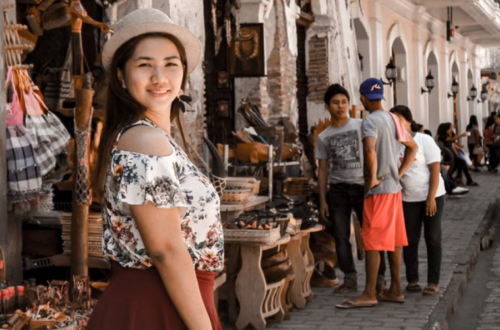Eight Filipino Wedding Traditions You Should Know
A Filipino wedding is always special—whether it’s yours or your loved ones’. Filipinos give much regard to wedding celebrations that each ceremony never fails to become meaningful and unforgettable. And, in each celebration, couples almost always include Filipino wedding customs in it—with a hint of tradition that feels different yet familiar.
There are a plethora of time-honored Filipino wedding traditions in the Philippines. These run from family involvement to strict adherence to Catholic wedding programs (e.g., incorporating Filipino money dance). Without a doubt, Filipino weddings have traditions that are a bit of a “through-the-looking-glass” experience for people in the West.
If you’re here to get great ideas on how to integrate your ancestry into your wedding ceremony, you’ve come to the right place! This month, let’s talk about all things Filipino wedding traditions and find out the subtle changes made and added by locals.
Eight Filipino Wedding Traditions
Before the wedding, there are Filipino traditions that are still widely practiced in the country. These are equally important customs that make the spirit of Filipino wedding ceremonies complete. Inarguably, the nuances, though subtle, set them apart from the rest of the world.
Below are a few Filipino wedding traditions you should know of, whether you’re planning to get hitched anytime soon or are doing it plainly for research purposes—especially to reconnect with your Filipino roots.
Before the wedding
1. Formal engagement ceremony
Betrothed couples look forward to one important Filipino tradition (with equal anxiety and anticipation): the pamamanhikan. Derived from the Tagalog root word ‘panhik,’ which literally means ‘to take upstairs,’ pamamanhikan symbolizes a guy’s formal proposal to his girl and her family.
Pamamanhikan is the initial and official stage in a traditional Filipino wedding. Before, men go to their would-be bride’s home, bringing his entire clan with him to officially ask for the girl’s hand in marriage in front of both their folks. The goal here was simple: the woman and her parents must accept the proposal. After that, both families are to share a meal, prepared and brought by the guy and his clan.
During the entire pamamanhikan, families gather to get to know each other more. Parents and other elders on both sides of the family also talk about wedding details, like budget, date, venue, and guestlist. After this, would-be grooms had to run errands and services for their future bride’s family for a few weeks (or months)—like cleaning the house or fetching water. This Filipino wedding tradition is locally called paninilbihan.
While some Filipino families no longer practice pamamanhikan—or limits the family members involved—a lot more local households strictly adhere to this significant tradition.
2. Bayanihan or family involvement
Although not many young Filipino couples observe it any longer, one of the most outdated Filipino wedding customs was the bayanihan (or cooperative undertaking).
The bayanihan dealt with lending a hand for the wedding preparations. Before, wedding planning was more a family and community task. Undeniably, this custom is beautiful as it strengthens the spirit of camaraderie and harmony.
Wedding preparations today, though, have been widely westernized. People nowadays hire companies to help them with wedding planning. The sense of bayanihan has been modernized in that people only offer moral support or suggestions instead of physically doing something.
At the wedding
3. Parents’ blessings
Asking for the parents’ blessings is still a commonly practiced tradition by modern Filipinos during wedding ceremonies.
During the processional at the wedding proper, a bride’s parents send their daughter to the altar, where the groom is waiting. This is very different from wedding ceremonies in the west, where the bride walks down the aisle by themselves.
Nevertheless, before the bride’s parents officially give them away to their partner, the bride and groom kiss the parents’ cheeks, hug each other, or do the pagmamano. The latter is a common Filipino practice of taking an elder’s hand and pressing it to your forehead. Seeking the parents’ blessings during the wedding is a sign of respect and symbolizes the parents’ approval of the couple.
Parents of the bride and groom have special seats during the wedding ceremony—slightly behind the couple, in front of the primary sponsors. This also says a lot about how parents (and elders) in the Philippines are highly regarded and appreciated.
4. Traditional Attire
A traditional outfit that grooms wore in the past was called Barong Tagalog (“Tagalog dress” or “clothing”). It’s a thin, long-sleeve shirt with embroidered details along the front in a U-shape pattern. Men typically wear it untucked over an undershirt.
Meanwhile, a bride’s wedding dress before wasn’t the usual long white gown we’ve seen contemporary brides wear. Filipino brides customarily wore the María Clara gown for weddings, a fancier version of the Baro’t Saya (a contraction of Baro at Saya, which means “blouse and skirt”). It’s often a two-piece dress with enormous butterfly sleeves and beautiful embroideries to complete the ensemble.
Over time, modern Filipino dresses have evolved into a full white dress, but with the addition of the—now smaller—puffy sleeves to keep homage to the traditional designs.
via Bride and Breakfast by BrilliantBum Photography
5. Wedding ceremony
On the wedding day, the groom—and his parents—typically arrive one hour before the ceremony to welcome their guests at the church or venue. The bride often comes precisely on time with her parents on board a (usually while-colored) bridal car.
Once the bride and her parents arrive, the wedding party will assemble inside the church for the processional. Catholic and Aglipayan brides traditionally carry an embellished, heirloom rosary with their bridal bouquet.
Filipino wedding ceremonies generally include an hour-long Eucharistic Mass or religious service. Besides the Bible and rings, coins are also essential parts of the Filipino wedding traditions that make the celebration unique.
- Arras or (13) coins
Traditionally in gold and silver, the arras or coins are essential to Filipino wedding ceremonies as they represent their future together—an emblem of their future children. They symbolize prosperity, care, and love, which couples do before God.
Sharing or exchanging coins or arrhae happens right after the priest blesses it. Secondary sponsors usually give it to the bride and groom, or a coin bearer carries them to the altar.
Similar to exchanging the rings, the bride and groom pass the arras to each other. But, it’s also important to know that it used to be passed from the groom to the bride only. It used to be his oath to provide for the family. This practice was modified in the current century.
The custom of exchanging 13 wedding coins goes way back to Spain. It served as a dowry, representing the groom’s pledge to support his bride and their future family.
6. Principal wedding sponsors
In traditional Filipino weddings, couples invite their aunts, uncles, or even friends to be their principal sponsors—they have to be married themselves. They’re often the ones that have been a massive part of a couple’s lives.
Customarily called Ninangs (godmothers) and Ninongs (godfathers), these principal sponsors are chosen to be the couple’s spiritual role models. They’re also invited to guide the bride and groom on their journey to married life.
The principal sponsors will bless the bride and groom via prayer during the ceremony.
7. Secondary sponsors
Like the principal sponsors, secondary sponsors are the group of people the bride and groom pick to be part of the ceremony because of their affinity or friendship with them. They usually are families or close friends.
There are presently and commonly three sets of secondary sponsors, carrying or bearing the candle, veil, and cord. Each of them is equally important for their respective symbolisms, but the bottom line for each item is this: they represent unity. Here they are:
- Candle
During the wedding ceremony, the secondary sponsors light a pair of candles on each side of the bride and groom. The candles are the emblem of God’s presence, guiding a couple into their new married life. The flame also symbolizes a couple’s burning passion for one another.
- Veil
After exchanging rings and coins, the bride and group kneel side by side. By then, the secondary sponsors drape a couple with a veil, one side over the bride’s head and the other side on the groom’s shoulder.
The veil represents good health, safety, and protection during their marriage.
- Yugal or Cord
The yugal or cord is a traditional ingredient of Filipino weddings. The cord, curled in an infinity symbol, embodies eternal love and fidelity. It also indicates that they walk the world as equals.
The yugal is often a silken cord and is personally woven by the bride’s mother (grandmother or any maternal figure). Many others use pearls in it to add a classic Filipiniana touch. Other catholic couples also use an oversized rosary, reflecting a union bound together before God.
At Filipino weddings, the cord sponsors put the yugal on top of the veil. It falls over the couple’s shoulders in the sign of infinity.
8. Wedding Reception
There are no specific reception programs or food prepared during Filipino weddings. But, there are some practices that have lived on in many regions, especially in the rural areas:
- Money dance
The first dance of the newlyweds is usually romantic. They typically follow by dancing with the bride and her father, and back to the bride and groom. Generally, this right here is the cue for the money dance.
The money dance is where the guests pin money to the bride and groom’s clothes using tape or pins. Guests may pin bills or red envelopes (for Filipino-Chinese families) depending on the ethnic group.
The monetary gift from the dance is a way to help the new couple get started financially.
- Tossing of bouquet
While younger Filipino couples presently incorporate the tossing of bouquets in the wedding reception, it wasn’t that common not too long ago. In the past, brides, especially the Catholics, offered it to the grotto of the Blessed Virgin Mary, a grave of an important relative, or the image of a patron saint.
Happy wedding month!
It isn’t a crime not to incorporate your tradition into your wedding. After all, it is your choice. But, if you want to honor your heritage, go for it and go really big!
Thankful you’ve found this while you’re planning your traditional Filipino wedding? You’re welcome, and may you have a blessed union!








